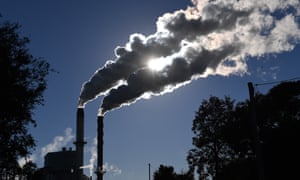Fugitive emissions from LNG are also fuelling rising national emissions, Ndever Environmental figures show
Australia’s emissions are again the highest on record, driven this
time by an increase in emissions from the electricity sector, which rose
to their highest levels in two years, according to new figures.
Fugitive emissions from Australia’s LNG industry also continue to fuel rising national emissions.
Ndevr Environmental,
an emissions-tracking organisation that publishes quarterly greenhouse
gas emissions data months ahead of the federal government, says its
latest research shows emissions for the year to March 2019 increased to 561 million tonnes of carbon dioxide equivalent.Fugitive emissions from Australia’s LNG industry also continue to fuel rising national emissions.
That was up from 554.5 million tonnes the previous year and 551.2 million tonnes in 2017.
Ndevr’s figures exclude unreliable data from the land-use sector, but the organisation said that even when it was included emissions had still increased for four consecutive years over the same period.
However, rising emissions from electricity generation between the December and March quarters is not unusual due to higher energy use in the warmer months.
Drum said the continued rise in fugitive emissions as a result of Australia’s LNG industry showed there was “a lot of work to be done around offsetting and reducing emissions from the LNG sector”.
“That’s offsetting particularly through land-use projects, but also energy efficiency,” he said. “And whether the carbon capture and storage nut can be cracked for that sector is going to be really important.”
Drum dismissed recent comments by Australia’s energy and emissions reduction minister, Angus Taylor, that LNG exports were contributing to emissions reductions overseas.
“I don’t think you can prosecute that argument unless you also take into account our coal exports, which have a counter effect,” Drum said.
There is no evidence to support Taylor’s claim and the biggest consumer of Australia’s LNG – Japan – is using it in place of emissions-free nuclear power.
“There’s still work to be done on policy. I sound like a broken record,” Drum said. “At the end of the day, participation in the emissions reduction fund is decreasing. Fewer projects, fewer contracts, less abatement.
“Unless something happens, something significant, this government will just be presiding over quarter after quarter, year after year, of increasing emissions. It’s as simple as that.”

No comments:
Post a Comment